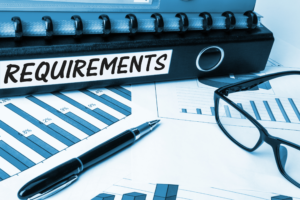Success in machine learning isn’t just about building accurate models—it’s about ensuring those models deliver value in production. This is where MLOps, short for Machine Learning Operations, plays a vital role. MLOps combines the principles of Machine Learning (ML), software development (Dev) and IT operations (Ops), and Data Engineering, offering frameworks, tools, and practices to manage the entire lifecycle of ML models. From development and deployment to monitoring and continuous improvement, MLOps bridges the gap between building models and maintaining their performance in real-world environments.
As 2025 approaches, the importance of MLOps continues to grow. Organizations increasingly rely on AI systems, yet this reliance comes with the challenge of ensuring reliability, scalability, and adaptability in production. To meet these demands, businesses are adopting advanced tools and strategies to streamline workflows and automate critical processes. This article explores the key techniques and emerging trends that will shape MLOps in the coming years, providing insights into the future of operationalized machine learning.
The Core Techniques in MLOps
Modular Architectures for Scalability
One of the defining trends in MLOps is the adoption of modular and microservice-based architectures. These architectures break complex systems into smaller, independent components, enabling organizations to scale their operations efficiently. By isolating individual services, teams can debug and update specific modules without impacting the entire system. A prime example of this approach is the lakehouse platform, which integrates DevOps, DataOps, and ModelOps to streamline workflows and provide a unified foundation for managing machine learning operations.
End-to-End Automation and CI/CD Pipelines
Automation is at the heart of modern MLOps workflows. The integration of Continuous Integration/Continuous Deployment (CI/CD) pipelines tailored for ML ensures that changes to code, models, or datasets are automatically tested and deployed. Tools like MLflow and Kubernetes play a key role in managing these pipelines, enabling faster deployment cycles, minimizing human errors, and ensuring consistent model performance in production environments.
Data and Model Versioning
Managing datasets and model iterations is critical in machine learning operations, especially as datasets grow larger and experimentation becomes more iterative. Tools like DVC (Data Version Control) provide a structured way to track changes in data and models, ensuring reproducibility and traceability. This technique addresses the challenge of handling diverse datasets and evolving models, which is a cornerstone for robust and reliable AI systems.
Monitoring and Observability in Production
Once models are deployed, monitoring their performance is essential to ensure they continue to meet business objectives. The trend is shifting from reactive approaches—where issues are addressed after they arise—to proactive monitoring. Techniques like drift detection and continuous performance checks help identify potential issues before they impact users. Emerging tools and frameworks are making real-time observability more accessible, allowing teams to monitor models and data pipelines with greater precision and responsiveness.
These core techniques form the foundation of MLOps, enabling organizations to handle the complexities of deploying and managing machine learning models at scale.

Emerging Trends for 2025
Adoption of Low-Code and No-Code MLOps Platforms
Low-code and no-code platforms like DataRobot, Driverless AI (H2O.ai), or SageMaker Canvas (AWS) are reshaping the way organizations approach MLOps. By offering user-friendly interfaces and pre-built components, these platforms make it possible for teams with limited technical expertise to implement and manage machine learning workflows. This democratization of MLOps is particularly impactful for small to medium enterprises, which often lack the resources to maintain dedicated machine learning teams. With these platforms, businesses can focus on applying AI to their specific needs without the overhead of building custom infrastructure.
AI-Augmented MLOps
The integration of AI within MLOps workflows is another transformative trend. AI-driven tools are being used to optimize pipelines, identify errors, and automate repetitive tasks. For example, intelligent deployment strategies can dynamically allocate resources based on workload, while performance tuning tools can adjust model parameters to ensure optimal operation. These advancements reduce manual effort and improve the reliability of machine learning systems in production. For example, Google’s Vertex AI offers intelligent pipeline management, while Azure’s MLOps framework incorporates automated error detection and resource optimization.
Privacy-Preserving and Ethical MLOps
Data privacy and ethical AI are no longer optional but essential. Tools like TensorFlow Federated (Google) and PySyft (OpenMined) enable privacy-preserving machine learning through techniques like federated learning and secure computation. These frameworks allow models to be trained across distributed datasets without compromising sensitive information. Companies like IBM are also investing in tools such as AI Fairness 360 to detect and mitigate bias in machine learning models, ensuring that ethical considerations are integrated throughout the MLOps lifecycle.
Unified DataOps and MLOps Pipelines
The convergence of DataOps and MLOps into unified operational systems is a natural evolution driven by the need for closer collaboration between data engineers and machine learning practitioners. Unified pipelines reduce the friction often encountered when transitioning from data preparation to model deployment. Databricks Lakehouse is an example of this convergence, integrating data engineering, analytics, and ML workflows into a single platform. Similarly, AWS Glue provides a unified environment for ETL (Extract, Transform, Load) and ML pipeline management. This trend fosters better collaboration between data engineers and machine learning practitioners, ensuring smoother transitions from raw data to production-ready models.
Tools and Frameworks Dominating 2025
MLflow and its Growing Ecosystem
MLflow continues to solidify its position as a leading platform for managing machine learning lifecycles. With expanded functionality in 2025, the ecosystem now supports deeper integrations with popular CI/CD pipelines and orchestration tools like Apache Airflow and Prefect. Features such as enhanced model registries and metadata tracking allow teams to better manage experiments and deployments across increasingly complex workflows. MLflow’s growing plugin ecosystem also enables integration with emerging technologies, making it a versatile tool for diverse machine learning use cases.
Kubernetes as the Backbone for Scalability
Kubernetes has become a cornerstone of MLOps infrastructure, with enhanced features designed specifically for machine learning workloads. These updates include GPU scheduling for training and inference, support for distributed model training with frameworks like TensorFlow and PyTorch, and custom resource definitions (CRDs) for ML-specific configurations. Tools such as Kubeflow, built on Kubernetes, offer end-to-end support for ML workflows, from data preprocessing to deployment. This adaptability ensures Kubernetes remains a preferred choice for organizations handling large-scale and distributed ML systems.
Specialized Tools for Model Monitoring
Monitoring machine learning models in production is more critical than ever, and a new generation of tools is leading this effort. Evidently AI provides comprehensive monitoring for data and model drift, enabling teams to detect and address performance degradation. WhyLabs focuses on automated anomaly detection in both data pipelines and models, providing actionable insights for production environments. Neptune.ai excels in logging and tracking experiments, making it easier for teams to compare model versions and identify the root causes of failures. These specialized tools address the growing demand for proactive monitoring and performance optimization in MLOps.
These tools and frameworks are shaping how machine learning systems are built, deployed, and maintained in 2025, offering practical solutions to meet the evolving needs of the industry.
Conclusion
The field of MLOps in 2025 reflects a dynamic intersection of advanced techniques, cutting-edge tools, and emerging trends that are redefining how organizations operationalize machine learning. From modular architectures and AI-augmented workflows to privacy-preserving techniques and unified pipelines, the landscape is evolving to address the increasing complexity of machine learning systems in production. These innovations are not only making it easier to deploy and manage models but also ensuring their reliability, scalability, and ethical alignment.
As the adoption of machine learning continues to accelerate, it is imperative for businesses to reassess their MLOps strategies. By embracing the latest tools and trends, organizations can position themselves to meet the challenges of the future while maximizing the value of their AI investments. The time to act is now—start building robust MLOps practices that align with the demands of 2025 and beyond.





